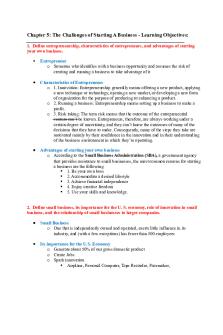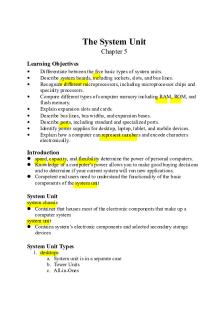Chapter 5 notes PDF

| Title | Chapter 5 notes |
|---|---|
| Author | Random Man |
| Course | EFFECTIVE BUSINESS COMMUNICATION |
| Institution | The University of Texas at Arlington |
| Pages | 4 |
| File Size | 69.3 KB |
| File Type | |
| Total Downloads | 12 |
| Total Views | 133 |
Summary
fowler notes...
Description
Chapter 5 Notes Creating Effective Business Messages
Plan – get the content right Understand your audience Develop your message Write – get the delivery right Set the right tone Apply a clear and concise style Review – double-check everything Get feedback Ensure your message is fair Make sure to proofread Audience analysis – learn about the people –what do they value, prioritize, and prefer Estimate your credibility – your readers will judge your content based on your credibility Anticipate reactions – how you think audience will respond
Information Gathering Identify the business problem Analyze the business problem (uncover facts, making conclusions, taking positions) Clarifying Objectives – (goals) Message Development Frame the primary message (focus the reader or listener on a certain idea or argument and highlights the support for the key idea or argument) Set up the logic of the message (supporting points, call to action) Most business messages use the Direct or Deductive Approach (message begins by stating the primary message and then the supporting reasons Some messages adopt the Indirect or Inductive Approach which supporting reasons are given first followed by the primary message See Figure 5.5 Avoid Unsupported Generalizations Avoid Faulty Cause-Effect Claims Avoid Weak Analogies Avoid Either-Or Logic ( be open to alternative explanations and opinions; be flexible) Avoid Slanting the Facts Avoid Exaggeration See Tables 5.2-5.6
Setting the Tone of the Message Positivity – can-do, confident attitude Focus on positive rather than negative traits of products or services Use constructive terms (avoid terms that focus on differences or adversarial relationships or positions) Show concern for others – show you have an interest in others Avoid relying too heavily on the “I Voice”– repeated use of the “I Voice” amplifies self-centeredness. Using the “We Voice” amplifies a tone that reflects other-orientation and is more inclusive Respect the time of your readers (most readers want fast responses) Give credit to others See Table 5.12 Meta Messages Messages people sometimes take away from a communication or group of communications These messages are encoded and decoded as a combination of content, tone, and other signals Conversations, emails, social media content, websites---all of these send meta messages that become the basis for your reputation ( help determine credibility)...
Similar Free PDFs

Chapter 5 - Lecture notes 5
- 15 Pages

Chapter-5 - Lecture notes 5
- 6 Pages

Chapter 5 - Lecture notes 5
- 83 Pages

Chapter 5 - Lecture notes 5
- 4 Pages

Chapter 5 - Lecture notes 5
- 20 Pages

Chapter 5 - Lecture notes 5
- 4 Pages

Chapter 5 - Lecture notes 5
- 7 Pages

Chapter 5 - Lecture notes 5
- 2 Pages

Chapter 5 - Lecture notes 5
- 3 Pages

Chapter 5 - Lecture notes 5
- 2 Pages

Chapter 5 - Lecture notes 5
- 6 Pages

Chapter 5 - Lecture notes 5
- 6 Pages

Chapter+5 - notes for chapter 5
- 8 Pages

Chapter 5 Notes 4e
- 12 Pages

Chapter 5 Notes
- 15 Pages

Chapter notes 1-5
- 72 Pages
Popular Institutions
- Tinajero National High School - Annex
- Politeknik Caltex Riau
- Yokohama City University
- SGT University
- University of Al-Qadisiyah
- Divine Word College of Vigan
- Techniek College Rotterdam
- Universidade de Santiago
- Universiti Teknologi MARA Cawangan Johor Kampus Pasir Gudang
- Poltekkes Kemenkes Yogyakarta
- Baguio City National High School
- Colegio san marcos
- preparatoria uno
- Centro de Bachillerato Tecnológico Industrial y de Servicios No. 107
- Dalian Maritime University
- Quang Trung Secondary School
- Colegio Tecnológico en Informática
- Corporación Regional de Educación Superior
- Grupo CEDVA
- Dar Al Uloom University
- Centro de Estudios Preuniversitarios de la Universidad Nacional de Ingeniería
- 上智大学
- Aakash International School, Nuna Majara
- San Felipe Neri Catholic School
- Kang Chiao International School - New Taipei City
- Misamis Occidental National High School
- Institución Educativa Escuela Normal Juan Ladrilleros
- Kolehiyo ng Pantukan
- Batanes State College
- Instituto Continental
- Sekolah Menengah Kejuruan Kesehatan Kaltara (Tarakan)
- Colegio de La Inmaculada Concepcion - Cebu